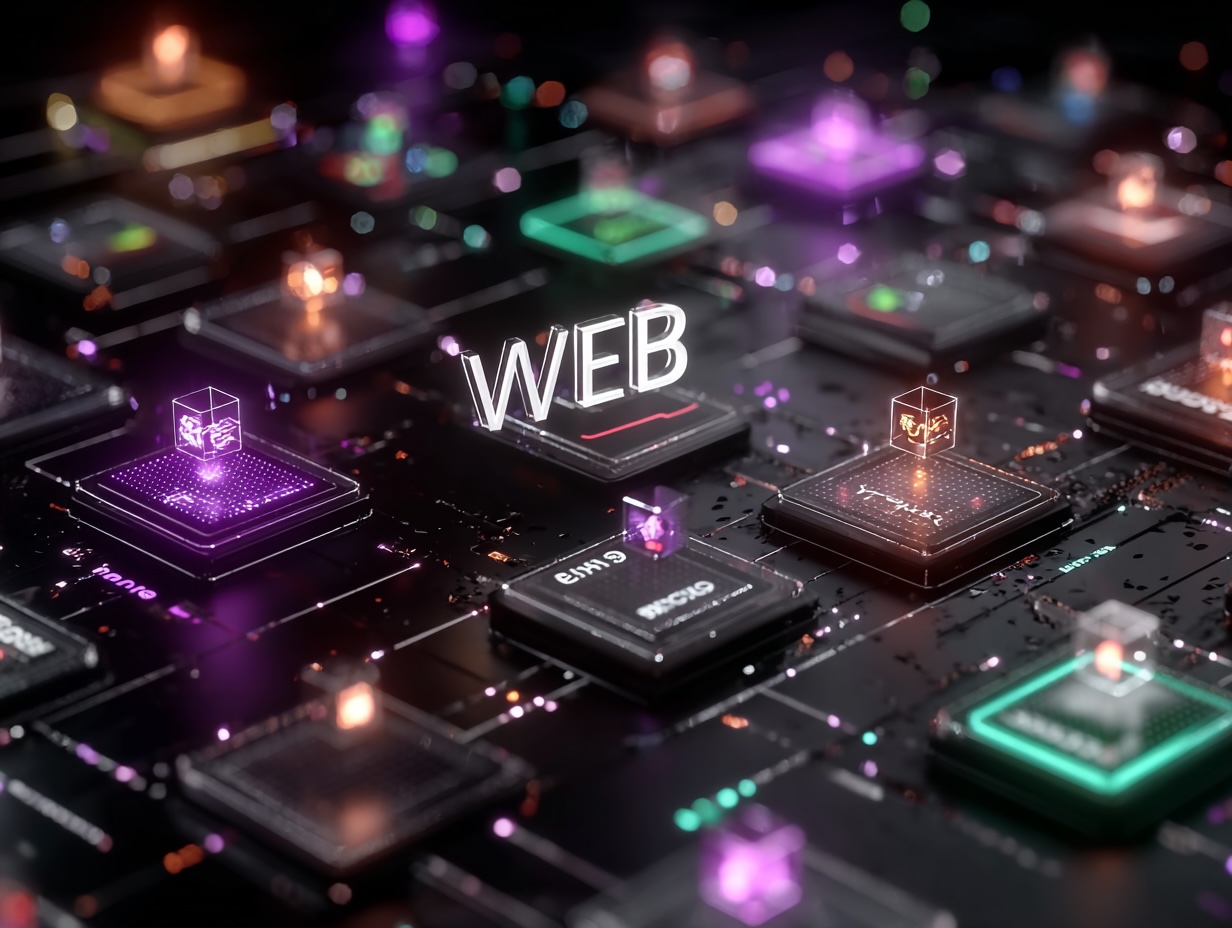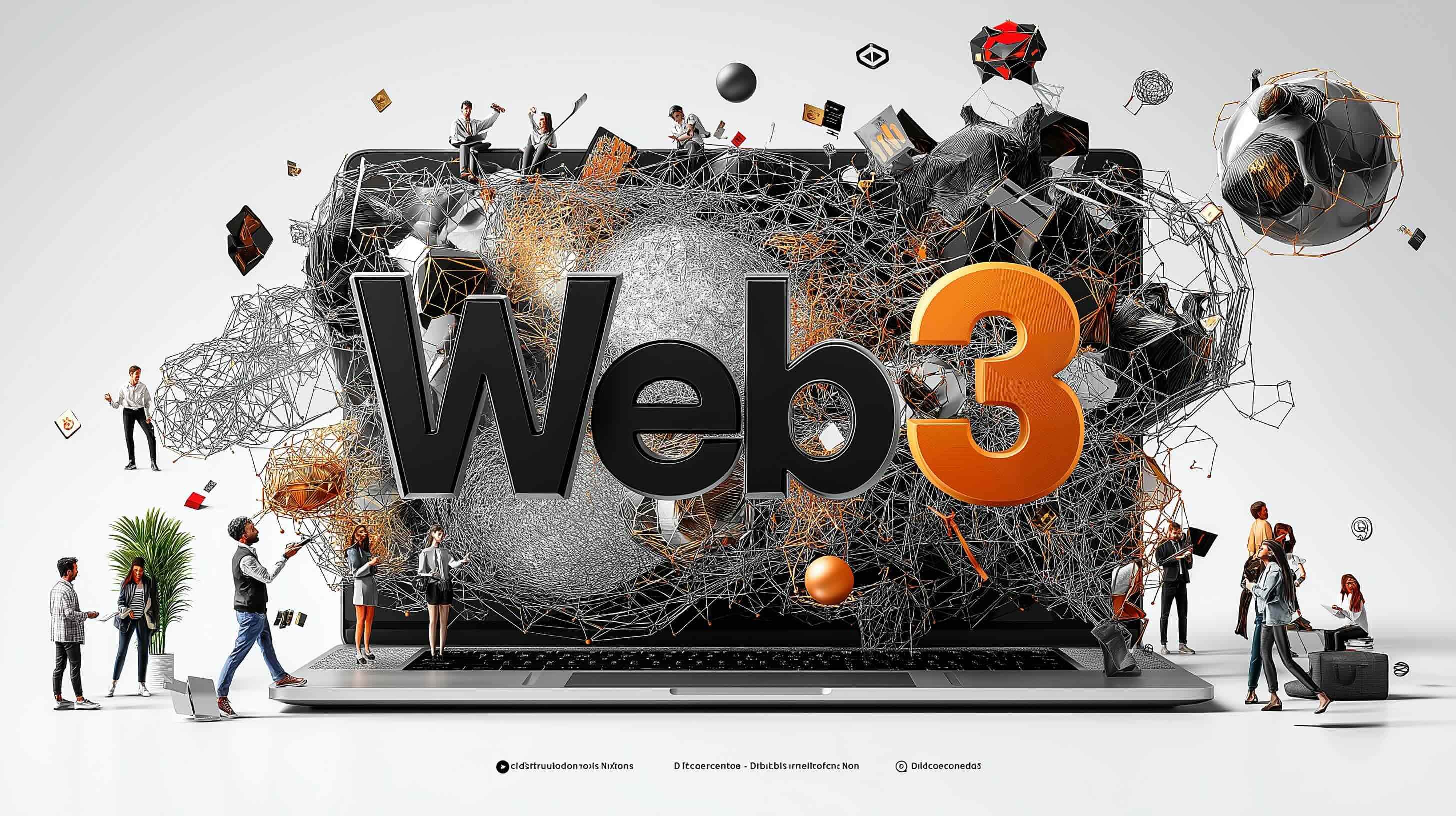.png)

The internet you use today is very different from what it was 20 years ago. You scroll, post, and connect through platforms that control how you experience everything online. What if you could own your data, protect your privacy, and decide how digital systems use your information?
That is what Web3 promises: a decentralized version of the internet where users regain control. In this guide, we’ll explore what Web3 really means, how it’s changing the internet, and what it could mean for your business and the future of digital marketing.

In the 1990s, websites were mostly static. You could read information, but there was little interaction. It was a one-way form of communication — often called the “read-only” web.
By the early 2000s, the internet evolved into a social, participatory space. Platforms like Facebook, YouTube, and Twitter allowed users to create and share content. However, most of the control and data ownership went to large corporations that managed these platforms.
Web3 represents the next evolution — the “read-write-own” internet. It is built on blockchain technology, which enables transparency, security, and user ownership. Instead of companies owning your data, you hold control over your digital identity, assets, and interactions.
Web3 is the concept of a decentralized internet that uses technologies such as blockchain, smart contracts, and peer-to-peer networks. It’s an internet built around ownership, transparency, and control rather than centralization.
Web3 essentially shifts the internet’s power structure from corporations to individuals.

Currently, your data fuels social networks, ad platforms, and tech companies. With Web3, users can decide how their data is used and can even earn from sharing it. This gives people direct value and privacy protection.
These innovations allow users to interact, trade, and own digital goods directly without going through corporate platforms.
Web3 introduces community-driven models, such as Decentralized Autonomous Organizations (DAOs), where users collectively vote and make decisions about how platforms operate.
Web3 creates opportunities for creators, brands, and small businesses. Artists can sell directly to fans. Businesses can tokenize loyalty programs or digital products. And companies like Brangerine can integrate blockchain-based solutions for transparency and customer engagement.
Whether you run a local agency, an e-commerce store, or a global tech company, understanding Web3 is important for long-term success.
Key Business Advantages:
For Brangerine and its clients, integrating Web3-inspired solutions could improve digital marketing strategies, customer data privacy, and brand credibility.
Starting with Web3 doesn’t have to be complicated. Here are a few beginner-friendly steps:
The goal isn’t to jump in blindly it’s to understand how this shift can make your business more relevant and resilient.

Myth: Web3 is just about cryptocurrency.
Reality: It’s about decentralization, identity, and ownership — not only crypto.
Myth: Web3 will replace Web2 overnight.
Reality: Both will coexist for years as the transition happens gradually.
Myth: Web3 is unsafe.
Reality: Like any technology, safety depends on using verified platforms and good security habits.
Understanding these distinctions helps you make informed decisions and spot real opportunities.
Web3 is still developing, but its direction is clear. We will see:
As Web3 continues to mature, businesses that adapt early will have the advantage of trust, transparency, and innovation.

Web3 isn’t a buzzword it’s a movement towards an internet owned by its users. By shifting from centralized control to individual ownership, Web3 creates a fairer, more open digital world.
For Brangerine, Web3 represents the next step in digital transformation. It opens new possibilities for brand experiences, transparent communication, and user trust — the very values that define modern digital success.
Ready to explore how your brand can adapt to the future of the internet?
Let Brangerine guide you through the next era of digital innovation.
Q1. What makes Web3 different from Web2?
Web3 adds ownership and decentralization. In Web2, platforms own your data; in Web3, you control it.
Q2. Is Web3 just about cryptocurrency?
No. While blockchain powers crypto, Web3 focuses on the wider ecosystem of decentralized technology, identity, and applications.
Q3. How soon will Web3 become mainstream?
It’s growing fast. Over the next few years, more businesses and governments will adopt Web3-based systems for secure, transparent operations.
